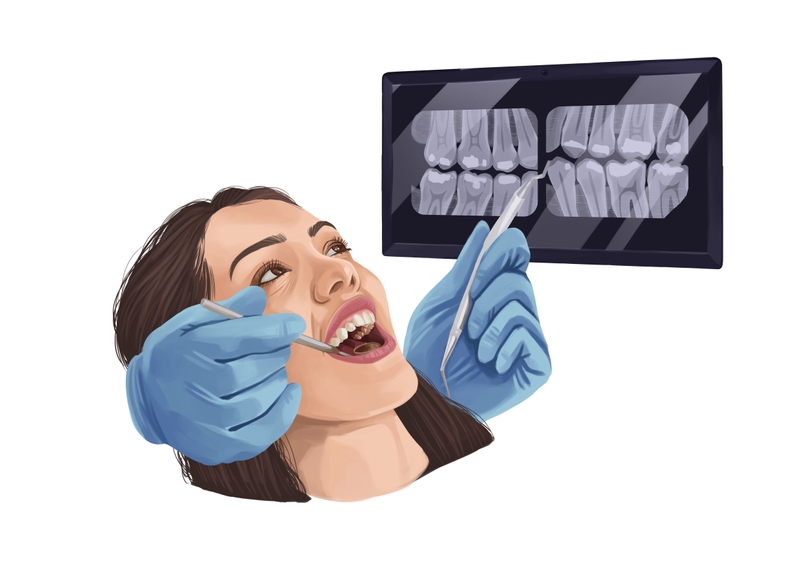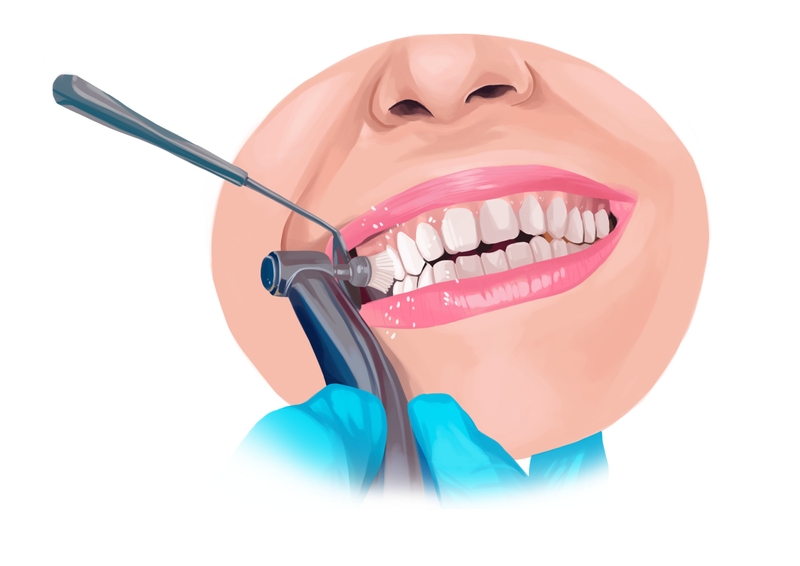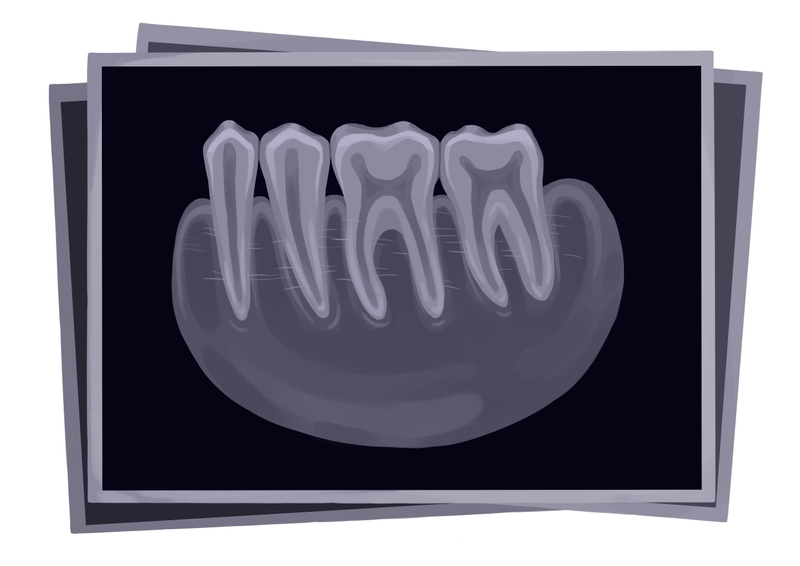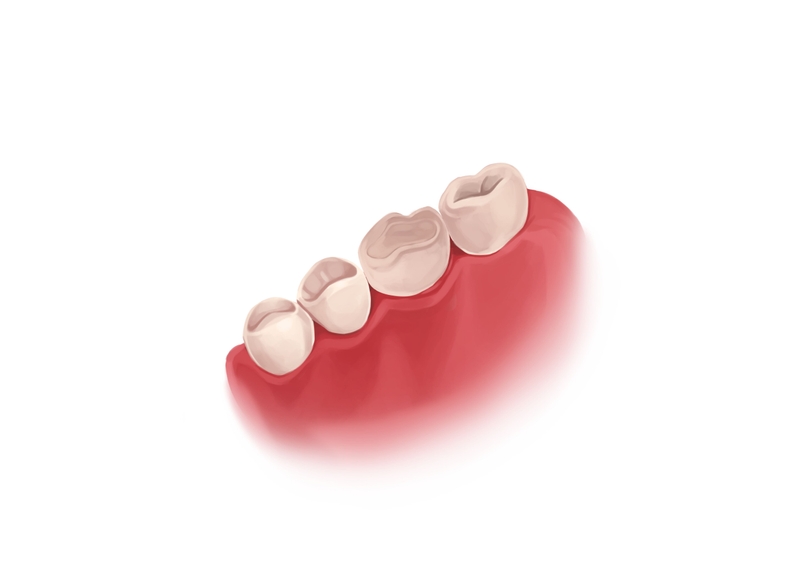- Dental insurance helps pay for basic dental care. It can also reduce financial risk in the event of dental emergencies or major dental procedures.
- You must choose a plan and work with your provider to determine coverage, deductibles and waiting periods. You will need to make regular monthly payments to keep your insurance active throughout the year.
- There is no such thing as a comprehensive dental insurance plan that fully covers all treatments.
Use Authority Dental to find affordable dentist with or without insurance or get a dental savings plan and save big on all dental procedures.
High out-of-pocket costs for dental services can be a serious financial barrier to care. Currently, they prevent nearly 20% of Americans from receiving the treatment they need on time.
Dental insurance is one of the ways to reduce these expenses or even cover them completely. But how does it work, and how much will it cost you? Here's everything you need to know.
How does dental insurance work?

Picture by Authority Dental under CC 2.0 license
Dental insurance makes sure you have help in financing basic oral care, which is not optional. An insurance policy reduces financial risk when you need major dental work.
To start taking advantage of those benefits, you need to choose a plan and determine insurance coverage with your provider. The coverage, also known as an annual cap, is the maximum your insurance will reimburse for your dental procedures per year.
Then, you have to pay activation fees, called deductibles. It is hard to find dental insurance with no waiting period. The policy is usually ready to use after about 1-3 months. Notice, however, that you have to make regular monthly payments to keep your insurance active throughout the year.
Some procedures will be available for free, while others will require you to cover a percentage out-of-pocket. These are co-payments. Despite having an active insurance policy, you may have to pay the full price for the treatment. Examples of such cases include when your yearly maximum limit is reached, or if the insurance does not cover a specific procedure.
What does dental insurance cover?

Picture by Authority Dental under CC 2.0 license
Full coverage dental insurance, one that would pay for all procedures completely, doesn’t exist. You will need to pay a percentage out-of-pocket for some procedures.
Exact coverage depends on your plan and the terms you work out with your provider. The following, however, tend to be more or less accurate for most dental insurance policies.
Fully covered procedures
You will be completely reimbursed for preventative care by almost all dental insurance companies if you are free of severe dental diseases. These procedures include:
dental checkups and cleanings twice a year,
cavity repairs, and
sealants.
In case you are struggling with oral issues, like advanced gum disease or tooth decay, preventive care may no longer be part of the coverage. The same goes if you need to have a dental exam or prophylaxis more than two times per year. You will most probably have to pay out-of-pocket, at least in part.
Partially covered procedures
So-called full coverage dental insurance includes partial reimbursement for restorative and at times even orthodontic treatment. Many plans cover simple procedures in as much as 80% or 50%. Here are a few dental services in this category:
These types of visits have to be medically necessary, however. The policy is unlikely to reimburse for, for example, crowns if all you are looking for them to fix is aesthetics.
Procedures not covered by insurance
Insurance will not cover any treatment that does not serve to improve the health of your mouth. The following procedures usually have to be paid for by the patient in full:
Of course, you may argue that bonding or veneers serve a medical purpose as well as a cosmetic one. Some policy providers may agree to negotiate, but you will need evidence in the form of X-rays and professional evaluations by a licensed dentist.
Types of dental insurance policies

Picture by Authority Dental under CC 2.0 license
There are four main categories of insurance plans you can sign up for:
individual dental insurance,
family dental insurance,
private dental insurance, and
federal health insurance programs.
An individual plan is meant to cover a single person’s dental costs. A family plan covers dental health of multiple members, even if just one person is officially signed up. It is often taken advantage of when only one parent is employed.
Also known as commercial dental insurance, a private plan is individual dental insurance offered via employers. Federal programs are funded by the state. A popular example is Medicare dental insurance. It has special types of dental insurance for seniors as well.
It’s also important to understand the difference between HMO and PPO. Those are the manner in which the plans of the categories above may be offered.
Health Managed Organizations
HMOs are a type of health or dental insurance plan that assigns patients a primary care provider. Visiting out-of-network dentists is never covered. The benefits include low rates and copayment.
On the other hand, HMO plans are very limited. Some may not even include emergency care. What’s more, many offices are overbooked and understaffed. A lot of patients quote negative experiences with these types of insurance plans.
Cheap
Copayment is low
Designated primary care provider
Only in-network dentists
Some plans may not include basic procedures
Emergencies and orthodontics may not be covered
Often overbooked and understaffed
Preferred Provider Organizations
PPO dental insurance policies have networks of providers including both professionals and hospitals with whom they sign contracts. This way coverage is larger for patients who use the plan and choose to go with an in-network specialist.
The pros of PPOs include the freedom of picking your professional, the option of out-of-network visits, and fixed rates.
On the down side, these plans may be more expensive than HMOs, out-of-network coverage is not as substantial (as in-network), and you have to pay out-of-pocket at the time of service.
The last factor means that the insurance provider will reimburse you after your treatment is done. You will have to pay for your dental procedures as if they were non-covered visits.
A network of dental providers you can choose from
Fixed rates
Covered out-of-network visits are possible
Usually more expensive than HMOs
Out-of-network coverage is lower
You are reimbursed after treatment
How much is dental insurance?

Picture by Authority Dental under CC 2.0 license
The average cost of dental insurance in the US is between $15 and $50 a month. With an average of $30, this comes out to about $360 a year. Annual coverage maximums go up to about $1,000-$1,500.
Bearing in mind that what is covered fully (2 exams, 2 cleanings, fillings, and sealants for children), you are experiencing savings. With the average price for an exam being $60 and $100 for a cleaning, you would spend $320 a year anyway. And this is assuming that you don’t need any fillings.
An important thing to note are charges that may be imposed if you are late with any fees. Those are often quite steep. Make sure to read fine print carefully to become aware of how the policy works.
You may want to search for supplemental dental insurance plans to cover more procedures during upcoming years. Remember though, that this comes with extra costs.
Secondary dental insurance
To cover costs that are not fully paid by your primary plan, you may consider secondary dental insurance.
This insurance processes the claim to cover any eligible expenses remaining after the initial payment is made by the first insurer. At the same time, it ensures that the combined coverage does not exceed the total cost of dental services.
Secondary dental insurance is just one of the different types of supplementary dental coverage. Other supplementary options include standalone plans that help patients pay for services limited or excluded in primary plans, for instance, dental implants or cosmetic procedures.
How to get dental insurance?
Finding a great plan is sort of like shopping. You have to compare your choices and consider what is going to pay off most in the long term.
Employer-provided insurance
The easiest way is to sign up through your employer. Visit or contact your HR department and find out what is available for you. You can discuss different options, they often include both individual and family plans. Make sure to concentrate on what is best in your particular situation.
Purchasing private dental insurance
Alternatively, you can ask your friends, family, or dentist. If you want to search for insurance online, visit the Health Insurance Marketplace. This is a government website that makes it easier to find a plan in your state.
FAQ
Is dental insurance worth it?
The cost-effectiveness of dental insurance depends on your personal needs and circumstances.
On the one hand, it can cover regular preventive care, which improves your oral health and can reduce the need for more costly restorative procedures, many of which are still partially covered by dental insurance. On the other hand, access to insurance requires regular payments and often involves waiting periods.
For these reasons, individuals with generally good dental health may sometimes find it more feasible to pay out of pocket when the need arises, while those expecting larger restorative treatments or committed to regular oral care may find dental insurance more beneficial.
What is the best dental insurance?
There is no one best or cheapest plan. It all depends on your individual needs and how much dental work you will require per year. Some more expensive plans may be more cost-efficient in the long term for some risk groups such as smokers.
The more procedures you expect to need, the better off you are with a plan that covers restorative work more widely. Those plans are usually more expensive. Also, remember to start thinking of insurance in advance, as waiting periods can sometimes last up to a few months.
Is there dental insurance with no waiting period?
Yes, there are no-waiting-period insurance plans available on the market. Depending on the company, you may get an offer covering all services or just basic and major procedures like dental cleanings, exams, or X-rays.
However, such plans often come with higher premiums or tiered coverage percentages.
How to verify dental insurance benefits?
What to do if you don’t have dental insurance?
There are other solutions to lower costs of oral care. Authority Dental recommends using dental plans. Discounts are available for all procedures, medically necessary or not. Whether you need dental implants or routine X-rays, there’s no need to worry.
The reductions reach 60%. What’s more there are no yearly caps at all and no paperwork is needed. You can start saving the minute you sign up. There are no waiting periods. The only catch is that you have to find an in-network dentist, but that is true for most insurance policies as well.